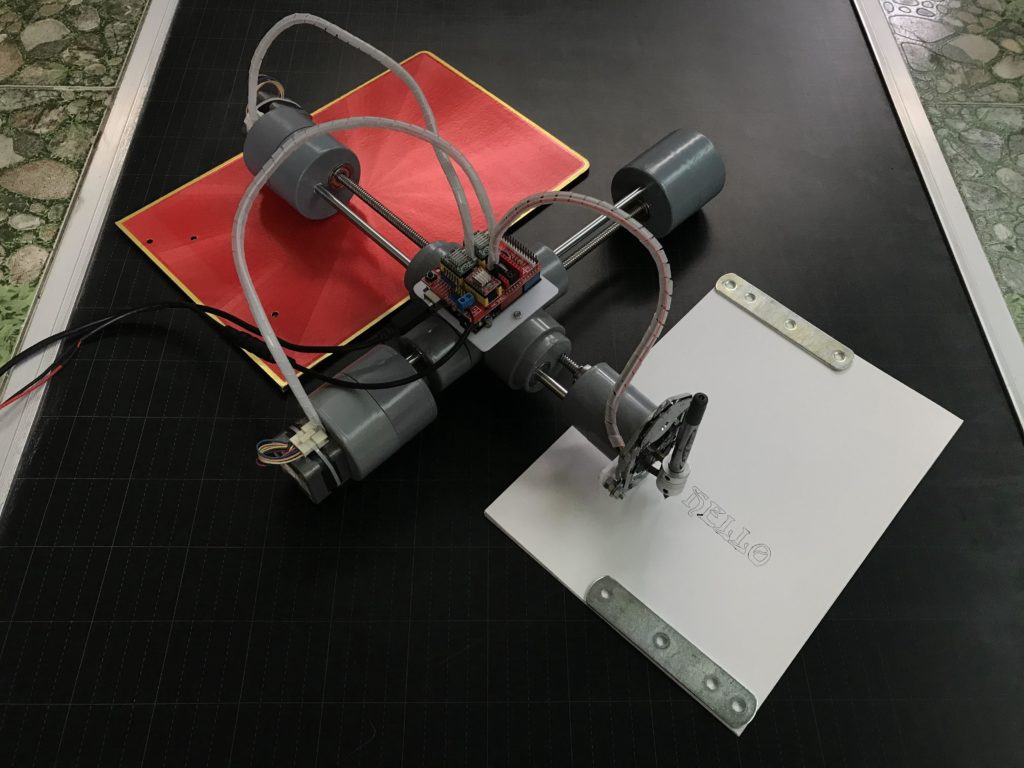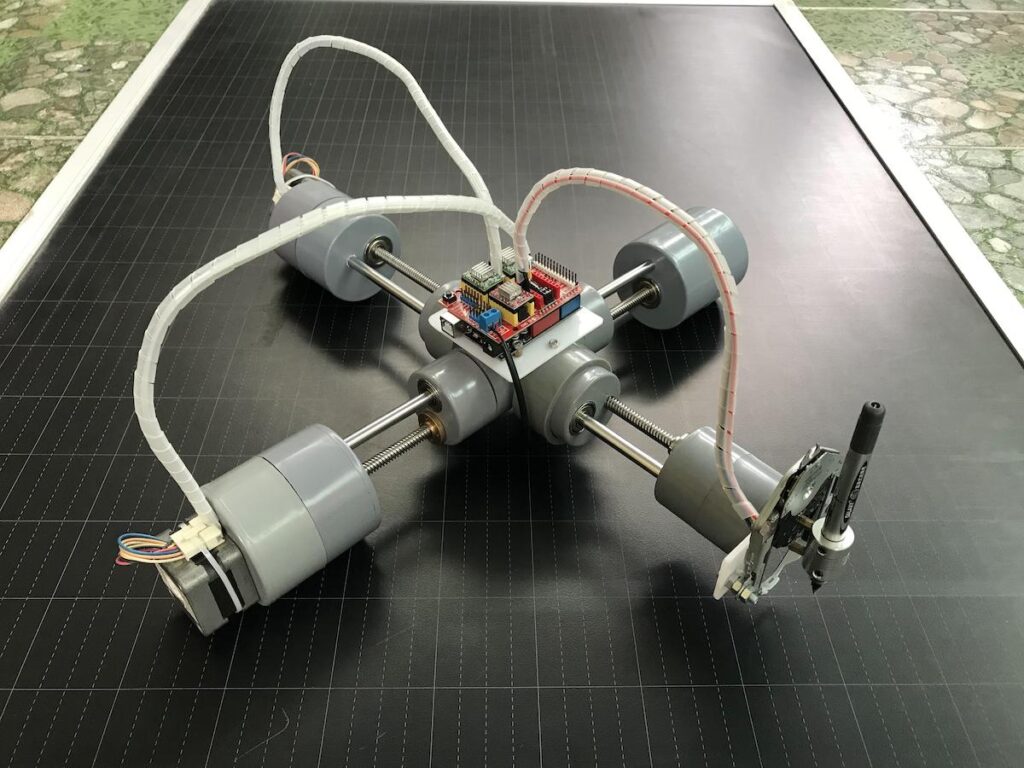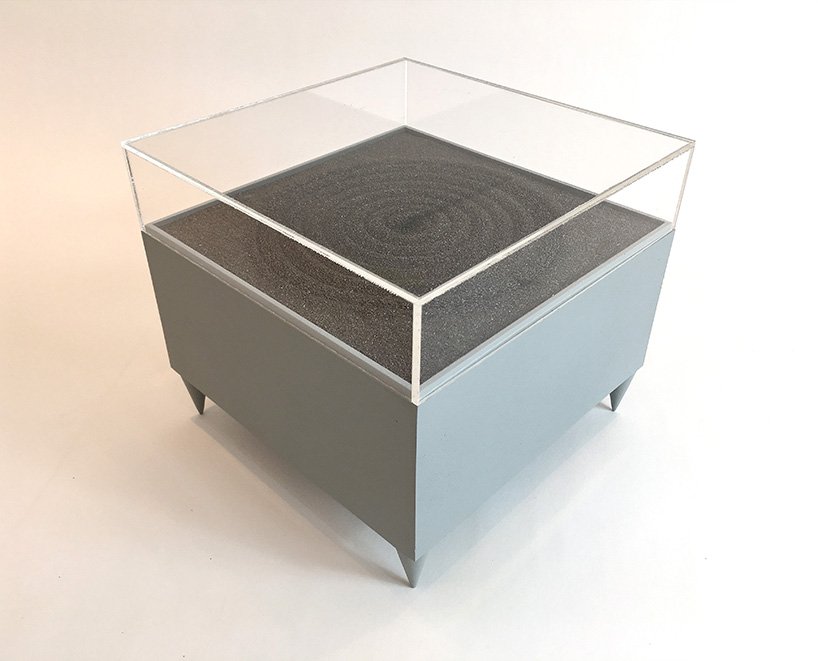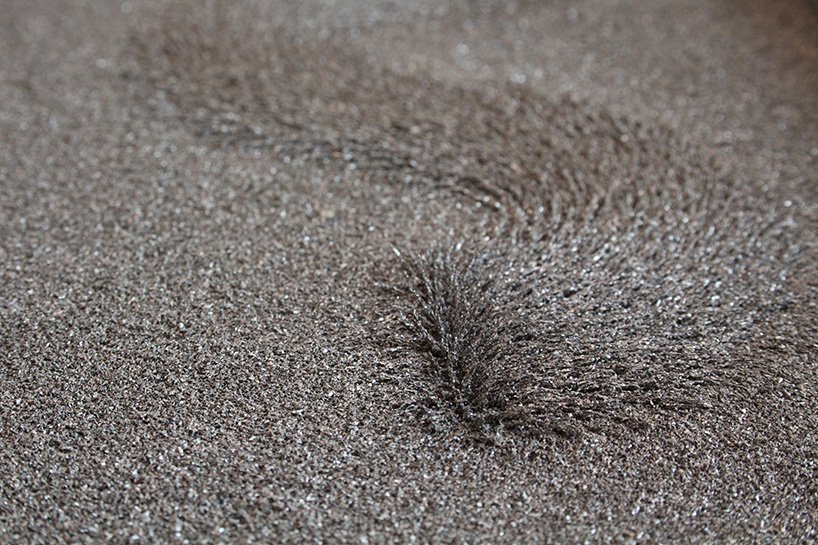16

The whole purpose of machine automation is to eliminate human needs and errors. A CNC machine doesn’t get tired, doesn’t need breaks, and performs a task exactly the same way every time. But what if that weren’t true? What if machines experienced human emotions and let it affect their work like we do? That’s the idea behind Devlin Macpherson’s Nervous Drawing Machine.
By all outward appearances, this is just a standard two-axis pen plotter. Like many laser cutters and 3D printers, it has a stepper motors controlled by an Arduino board that follows g-code commands. A command might be something like “move the X axis 2mm to the right.” By chaining hundreds or thousands of those commands together, the machine can follow complex toolpaths that form letters, symbols, pictures, or anything else. Macpherson equipped the pen plotter with a continuously fed roll of paper so it can draw indefinitely.
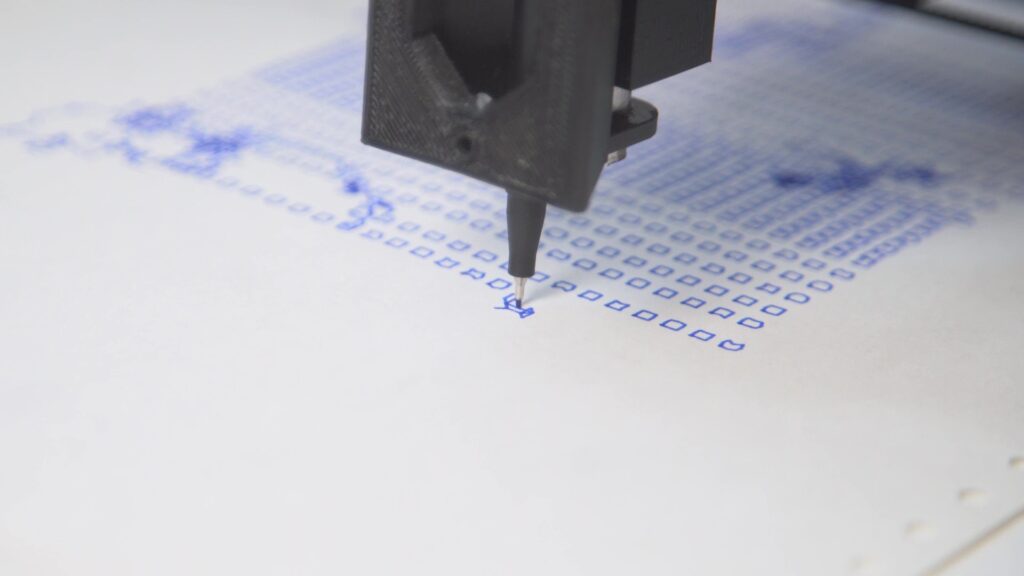
Under normal conditions, the machine plots row after row of little squares. A video camera points at the plotter as it works and the video feed streams through a website. And this is where things get interesting. If someone visits the website and watches the stream, the pen plotter becomes nervous about being observed. It will then start to make mistakes, like drawing scribbles instead of squares. Once the visitor leaves the website and the machine is unobserved once again, it will return to drawing perfect rows of squares.
Macpherson built the Nervous Drawing Machine for his thesis project titled ICFWYWM (I Can’t Focus When You’re Watching Me). Like all good interactive art installations, it reflects the human condition.
The post This pen plotter gets nervous when observed appeared first on Arduino Blog.

